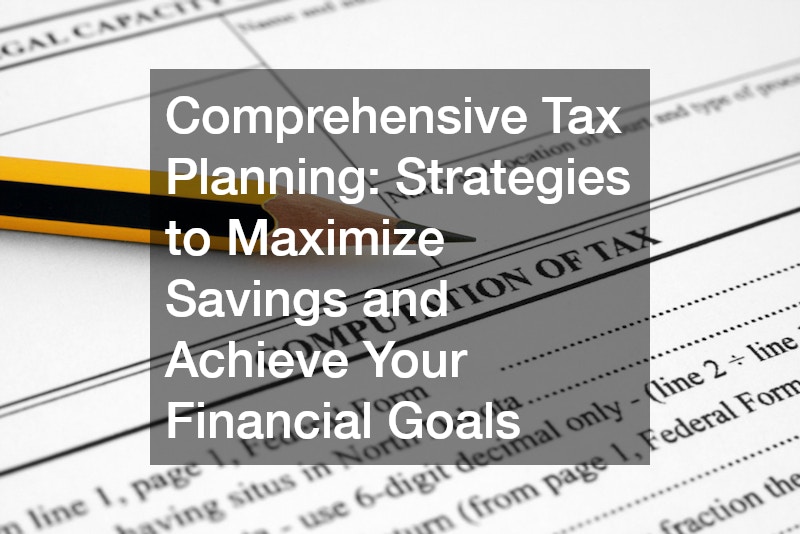
Tax planning is an essential part of financial management that often gets overlooked. Many individuals and businesses only think about taxes during tax season, but effective tax planning is a year-round activity.
By proactively managing your finances and understanding tax implications, you can make smarter decisions that reduce your liabilities and increase your savings. With careful strategy, tax planning can help you align your financial goals—whether they involve personal growth, investments, or business ventures—with tax-saving opportunities. In this guide, we’ll explore how to optimize your tax planning to maximize savings and achieve your broader financial aspirations.
Step 1: Reviewing Past Tax Returns
The first step in effective tax planning is a detailed review of your past three years’ tax returns. This retrospective analysis can help identify missed opportunities, such as unclaimed deductions or credits, and allows for adjustments within the IRS’s three-year correction window. Recovering overlooked benefits ensures you’re starting with a clean slate and maximizing prior savings.
Step 2: Assessing Your Current Financial Status
Once your past returns have been analyzed, the focus shifts to your current financial situation. This involves:
- Income Analysis: Understanding your year-to-date income to estimate tax liabilities.
- Personal Circumstances: Gathering details about marital status, living arrangements, and significant life events like moving, refinancing, or supporting aging parents.
- Future Goals: Discussing plans such as having children, buying a home, or relocating to another state.
These factors provide a comprehensive picture of your financial health and help tailor a tax strategy that fits your unique needs.
Step 3: Optimizing Business Structure
For business owners, choosing the right entity structure is a critical aspect of tax planning. Depending on your goals, you may operate as an LLC, S Corporation, or C Corporation. Each structure offers different tax benefits and obligations, and the choice should align with your business’s long-term objectives.
Additional considerations include:
- Establishing multiple entities for tax efficiency.
- Creating management companies to oversee operations.
- Exploring strategies to optimize employee or family member roles within the business for tax advantages.
Step 4: Real Estate and Investment Planning
Real estate ownership can be a powerful tool in tax planning, whether you already own investment properties or are planning to purchase them. Key considerations include:
- Funding Sources: Identifying available resources, such as brokerage accounts or retirement funds, to finance real estate investments.
- Entity Ownership: Deciding whether to purchase properties in your personal name or through an LLC for added protection and tax benefits.
- Cost Segregation Studies: Leveraging cost segregation to accelerate depreciation and reduce taxable income from rental properties.
Investment planning is equally important. By reviewing accounts such as Robinhood, TD Ameritrade, or Vanguard, you can align investment strategies with your tax and financial goals.
Step 5: Aligning Retirement Goals with Tax Strategies
Retirement planning is a cornerstone of tax planning, offering opportunities to defer taxes and grow wealth. Key steps include:
- Evaluating current retirement accounts and their contributions.
- Exploring alternative investments, such as real estate, for those who prefer not to rely solely on traditional retirement vehicles.
- Incorporating strategies that balance immediate tax savings with long-term financial growth.
Understanding your preferences and financial priorities ensures your tax plan supports your retirement aspirations.
Step 6: Developing and Presenting Strategies
After gathering all relevant information, the next step is to design a personalized tax strategy. This involves:
- Strategy Development: Crafting plans that reduce your adjusted gross income (AGI) and taxable income while optimizing deductions and credits.
- Impact Analysis: Presenting a clear breakdown of how each strategy affects your taxes, including individual and combined savings.
- Informed Decision-Making: Collaborating to choose the most effective strategies that align with your goals and preferences.
Strategies might include placing family members on payroll, setting up management companies, maximizing 401(k) contributions, or delaying cost segregation studies for optimal timing.
Step 7: Implementation and Execution
Once the strategies are finalized, implementation begins. This phase involves:
- Setting up entities and management structures.
- Allocating assets and accounts in accordance with the tax plan.
- Ensuring compliance with tax laws to avoid future liabilities.
A well-executed plan positions you to take full advantage of tax benefits while staying aligned with your broader financial objectives.
Benefits of Proactive Tax Planning
By engaging in comprehensive tax planning, you can:
- Reduce Tax Liabilities: Minimize the amount owed by leveraging all available deductions, credits, and strategies.
- Maximize Savings: Identify and recover missed opportunities from prior years.
- Achieve Financial Goals: Align tax strategies with personal and business objectives for long-term success.
- Gain Peace of Mind: With a clear and actionable plan, you can confidently navigate tax season without surprises.
Conclusion
Tax planning is more than just a year-end activity; it’s a continuous process that integrates your past, present, and future financial decisions. Taking the time to fully understand your tax situation—and working with an expert to tailor strategies—can lead to substantial financial benefits. A proactive approach not only reduces your tax burden but also positions you to achieve your long-term goals, whether that means building wealth, retiring comfortably, or expanding a successful business. Start today to ensure you’re not leaving money on the table, and instead, setting yourself up for a secure and prosperous future. Tax planning can be the key to unlocking financial success and stability.
.




